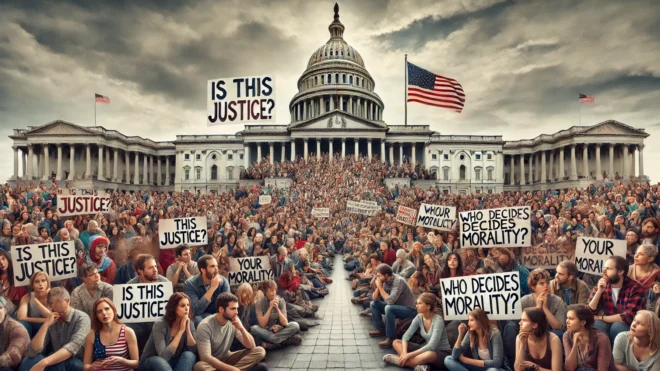John Crawford, of Sierra Madre, misunderstands the proper purpose of SB 375. Yes, it is a form of social engineering, but so are the existing policies in those towns forbidding high density housing. Yes, it is mistaken if it is trying to get suburbanites out of their single family houses and into apartments. It is not so much a question of whether there is social engineering; it is “whose” social engineering; the state or metropolitan community, the local neighbors, or the land owners and developers?
While in theory I am a land use libertarian, I would in practice draw a half-mile circle around these major transit hubs [not all bus stops are “major transit hubs” but only where several bus lines cross] and outside of the half-mile circle I would leave the single family homes alone. Between one half and one quarter mile of the hub, I would have a transitional zone of duplexes and triplexes and the like, which can be built to not look very different from some kinds of single family housing. Within the quarter mile radius there would be high density mixed use “new urban” projects and parking structures. The object of this is not to get people out of their suburban homes, but to provide more housing and other opportunities for other kinds of people – the kind of people who often do the service work anyway – to find places to live. I would call it “housing justice.” Of course, maybe these places won’t be cheap enough for the real service workers, and there will have to be a trickle-down effect, as the people who move into these new urban communities move out of some other place, freeing it up. The other question I would ask the suburban residents of Sierra Madre, Walnut, and South Pasadena is would they rather have their own young adult children living in these kinds of places, or living with their parents? It is the cost of housing, largely, that causes so many twentysomethings to be still living with their parents nowadays! New Urbanism or “smart growth” should be an addition to, not a substitute for “traditional” [1950s] style suburban development. And if we want the suburban lifestyle to pay more of its own costs, a higher gasoline or carbon tax would be a better way to do this.
And many have “incomist” concerns about whether less affluent people would be more disposed to crime, graffiti, and other sorts of wrongdoings. [Affluent people commit sins and crimes, too, but not usually of the sort that impact the immediate neighborhood or are violent.] I’d put a police station right in the middle of the dense “new urban” section. If crime and graffiti are really behavioral problems of some lower income people, then, not leaving low income people in some remote location, but bringing them out in small doses to these other communities and teaching them to behave, would be in their best long term interest! I say this, but I would prefer that these new urbanist enclaves “not” be subsidized, but that they rent or sell [as condos] for market value. Density will split the high values of land that we have in California over a larger number of units and make the units a little more affordable in any case. People claim they don’t like either “sprawl” or “density,” but actually we need a bit more of both if people are to be better housed.
Related: “John Crawford: Sacramento”s war on small cities” by John Crawford at SGVTribune.com
Related: “It”s time to raise California”s gas tax” by George Skelton at LATime.com



